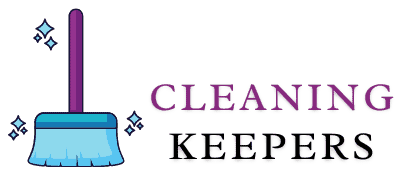When it comes to hardwood floor maintenance, many business owners are left wondering, “Should you steam clean hardwood floors?” This cleaning method has gained popularity due to its effectiveness in killing bacteria and removing grime. However, the debate about using a steam mop on hardwood floors continues to heat up. Claims circulate about potential damage from the heat and moisture of steam cleaning. As a business owner, you strive to maintain a pristine environment that upholds your brand’s image. Thus, understanding the implications of steam cleaning on your hardwood floors is essential and may save you unnecessary expenses in the long run. Steam cleaning hardwood floors is a topic of debate due to its potential to cause damage, much like the concerns addressed in how to repair dents in hardwood floor.
Understanding Hardwood Floors and Moisture
To truly grasp the potential impact of steam cleaning, we must first delve into the nature of hardwood floors and their relationship with moisture. This understanding is crucial in making an informed decision about the appropriate cleaning methods for your business’ hardwood floors.
Understanding Moisture Impact on Hardwood Floors
Hardwood floors are crafted from natural materials, so they have an inherent sensitivity to moisture. The structure of hardwood contains microscopic cells, similar to straws, that absorb and release moisture based on the environment. In a humid setting, the cells absorb moisture, causing the wood to expand. Conversely, when the environment is dry, these cells release moisture, leading to contraction. This constant cycle of expansion and contraction can lead to warping, cracking, and other damage over time. Understanding this delicate balance between hardwood and moisture is vital when considering cleaning methods like steam mopping your hardwood floors.
Potential Risks of Steam Cleaning On Hardwood Floors.
Steam cleaning poses several potential risks to hardwood floors. The primary concern is the intense heat and moisture produced by the steam mop. While steam effectively kills germs and lifts dirt, it can also penetrate the wood cells, causing them to absorb excess water. This can lead to the wood expanding rapidly, resulting in warping or cupping. Furthermore, the protective finish on your hardwood floors could be stripped away by the high temperature of steam, leaving the wood susceptible to stains and scratches. Therefore, when considering a steam mop for hardwood floors, it’s essential to understand these potential risks and weigh them against the benefits.
The Argument Against Steam Cleaning: Expert Opinions
Experts in hardwood floor maintenance often advise against steam cleaning, citing numerous reasons this method may do more harm than good. Let’s delve into their perspectives to understand why there might be better choices than steam mopping for your hardwood floors.
Expert Opinions on Flooring Care
Prominent flooring associations and manufacturers are wary of steam cleaning hardwood floors. The National Wood Flooring Association (NWFA) advocates for the careful consideration of moisture levels when cleaning hardwood floors. They caution that steam mops could cause a rapid increase in moisture levels, harming the wood. Similarly, many hardwood floor manufacturers explicitly state that using a steam mop could void the warranty on their products. They advise using a dry or damp mop, pointing out that less moisture means less risk of damage. Experts agree that the potential risks involved with a steam mop on hardwood floors outweigh the benefits. Therefore, exploring other cleaning methods that are less likely to damage your hardwood floors is prudent.
Highlight The Potential For Damage And Warranty Issues.
The potential damage steam cleaning can cause to hardwood floors is not to be taken lightly. Excessive steam can diminish the longevity of your floors, leading to costly repairs or replacements. Moreover, warping and cupping from moisture infiltration can result in an uneven and visually unpleasing floor surface, undermining your business aesthetics.
Even more concerning is the impact on your floor’s warranty. Many manufacturers explicitly state that steam cleaning voids the warranty, leaving you financially liable for any damage incurred. This risk alone can be enough to dissuade many business owners from using a steam mop on their hardwood floors.
The Case for Caution: Consumer Reports Insights
In addition to expert perspectives, consumer experiences, and research reports provide valuable insights into the real-world implications of steam cleaning hardwood floors. Let’s look at these findings to further inform your decision-making process.
Consumer Insights on Steam Cleaning Hardwood Floors
Consumer Reports has provided compelling evidence on the implications of steam cleaning hardwood floors. Their research underscores the potential risks, noting that steam mops can damage the finish of your hardwood floors, leading to a dulled and discolored appearance.
Moreover, they found that repeated steam cleaning can cause wood planks to cup or warp, significantly affecting the aesthetics and functionality of your hardwood flooring. Consumer Reports thus advises business owners to exercise caution when considering steam mops for hardwood flooring, emphasizing the importance of preserving the longevity and integrity of your investment.
The Significance of Adhering to Manufacturer Guidelines
Adherence to manufacturer guidelines is paramount when maintaining the integrity of your hardwood floors. These guidelines are designed with an in-depth knowledge of the product, specifying the cleaning methods best suited to preserve your floor’s quality and aesthetic appeal. Deviating from these recommendations, such as using a steam mop, can cause irreversible damage and potentially void your warranty. Remember, your hardwood floors are an investment that, with proper care, can last for decades. Therefore, following the manufacturer’s advice closely is in your best interest, prioritizing long-term durability over short-term cleaning convenience.
Alternatives to Steam Cleaning: Best Practices for Hardwood Floor Care
Considering the potential risks associated with steam cleaning, exploring alternative methods of maintaining hardwood floors that safeguard their longevity and aesthetic appeal is essential. Let’s delve into best practices that offer effective yet less damaging ways to care for your hardwood flooring.
Offer Alternative Cleaning Methods Recommended By Experts.
Experts recommend various safe and effective alternatives to steam cleaning for hardwood floor maintenance.
Dry Mopping: Dry mops or dust mops are excellent for everyday cleaning. They pick up dust, pet hair, and other loose debris without damaging your hardwood floors.
Damp Mopping: A wet mop can be used if your floor is particularly grimy. However, it’s crucial to wring out the mop thoroughly before using it to avoid saturating the wood with water.
Cleaning Agents: Specialized hardwood floor cleaners can be used for stubborn stains or marks. These products are designed to clean effectively without damaging the finish or the wood.
Experts often recommend alternative cleaning methods to protect the integrity of the wood, similar to the practices outlined in how to clean and maintain laminate floors best practices and products.
Tips for Maintaining The Hardwood Floors.
Maintaining the integrity and appearance of your hardwood floors is a crucial aspect of ensuring their longevity. Here are some expert tips to help you achieve this:
- Regular Cleaning: Regularly sweep or vacuum your hardwood floors to remove dust and debris, which can cause scratches on the surface over time.
- Prompt Stain Removal: If spills occur, clean them up immediately to prevent the liquid from seeping into the wood and causing stains or warping.
- Use Furniture Pads: Protect your hardwood floors from scratches or dents by placing protective pads under the legs of your furniture.
- Avoid Direct Sunlight: Constant direct sunlight can cause hardwood floors to fade. Use blinds, curtains, or UV-protective window films to mitigate this.
- Climate Control: Maintain a stable indoor climate, as drastic changes in temperature or humidity levels can cause the wood to expand or shrink, leading to cracks.
- Refinish Periodically: Depending on the wear and tear, consider refinishing your hardwood floors every 7 to 10 years to restore their luster and protect the wood.
- Follow Manufacturer’s Instructions: Always adhere to the floor manufacturer’s maintenance advice. Using unsuitable cleaning products or methods could damage the floor and void your warranty.
Steam Cleaning and Business Implications: A Cost-Benefit Analysis
When contemplating whether to steam clean hardwood floors in a business setting, evaluating the cost-benefit ratio is crucial. The following section will explore the potential financial implications and operational considerations associated with steam cleaning, thus enabling you to make an informed decision for your business.
Cost-Benefit Analysis of Steam Cleaning Hardwood Floors
Steam cleaning hardwood floors can initially seem cost-effective, particularly in high-traffic commercial environments where cleanliness is key. The ability of steam mops to sanitize and remove stubborn grime quickly may appeal to busy business owners. However, the potential costs of steam cleaning damage far outweigh these short-term benefits.
Damage from steam mopping, such as warping, discoloration, or a dulled finish, can depreciate the value of your flooring investment and necessitate expensive repairs or replacements. Moreover, it may disrupt business operations during restoration. Therefore, the long-term financial implications and the risk to your hardwood floors’ aesthetic appeal and integrity make steam cleaning a less desirable option.
Using steam cleaners can also affect the floor’s finish, potentially leading to dullness and discoloration, which is a concern similar to that in how to remove carpet pad stains from hardwood floors.
Guidance for Business Owners on Floor Care Decisions
In making informed decisions for your hardwood floor care, it is crucial to prioritize longevity and the preservation of your investment over short-term conveniences. Steer clear from methods that risk causing irreparable damage, like steam mopping. Instead, opt for recommended cleaning practices such as dry and damp mopping and utilizing specialized cleaners. Remember, preventive maintenance like regular cleaning, immediate spill cleanup, and climate control are your best defenses against costly repairs or replacements. Always heed manufacturer guidelines to ensure your maintenance practices align with the unique specifications of your hardwood flooring.
Following the manufacturer’s guidelines is crucial to avoid voiding the warranty of your hardwood floors, as emphasized in how to repair scratches on hardwood floor.
Conclusion: Making the Right Choice for Your Business
In conclusion, as a business owner, the health and longevity of your hardwood floors should be a top priority. Avoid steam cleaning, which can cause warping, discoloration, and a dulled finish. Instead, opt for safer methods like dry or damp mopping and using specialized cleaners. With preventative maintenance and following the manufacturer’s guidelines, these practices can help ensure your hardwood floor’s durability and aesthetic appeal for years. Remember, taking care of your flooring is an investment in your business. So, should you steam mop hardwood floors? Considering the long-term implications, the answer is a resounding ‘no.’


